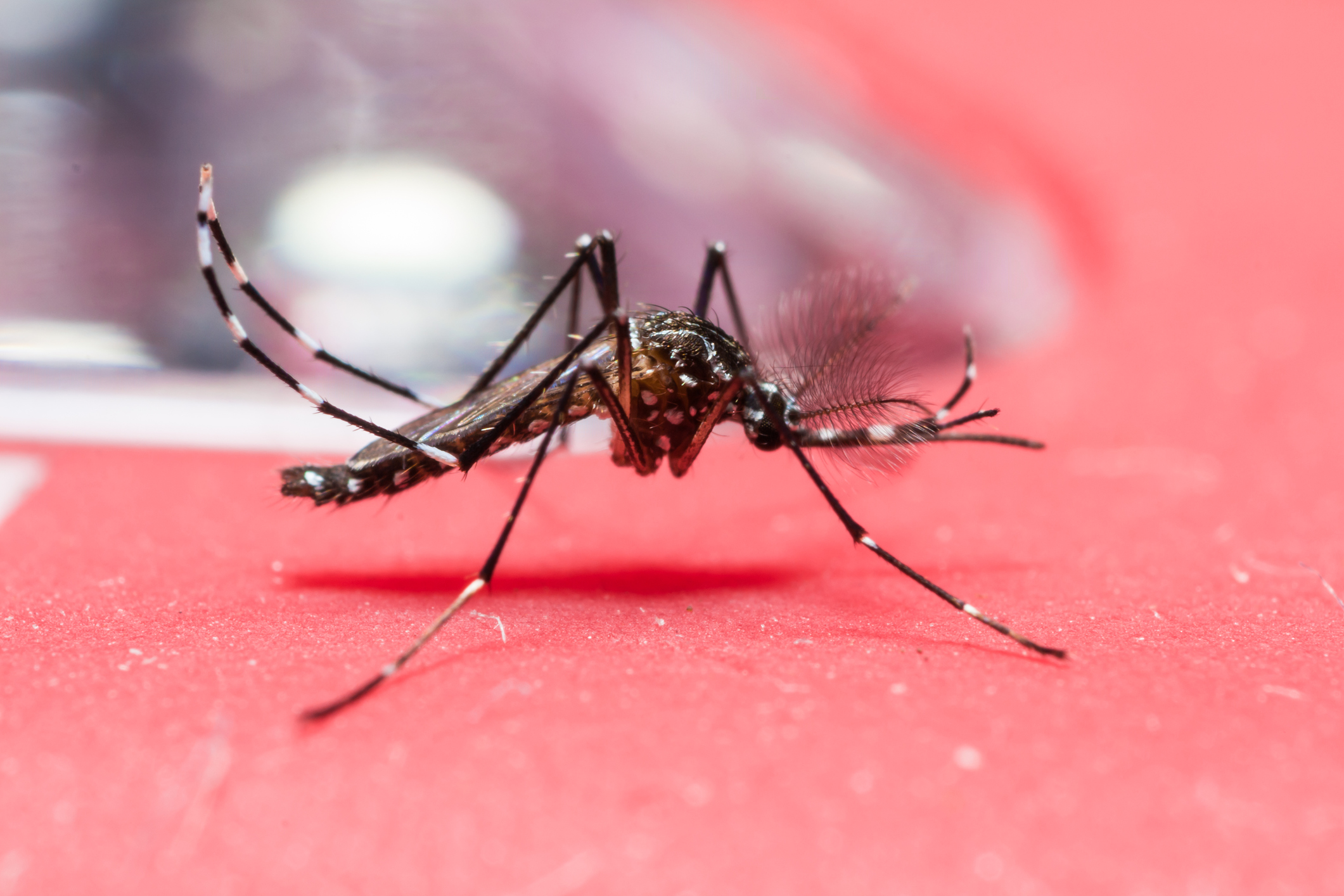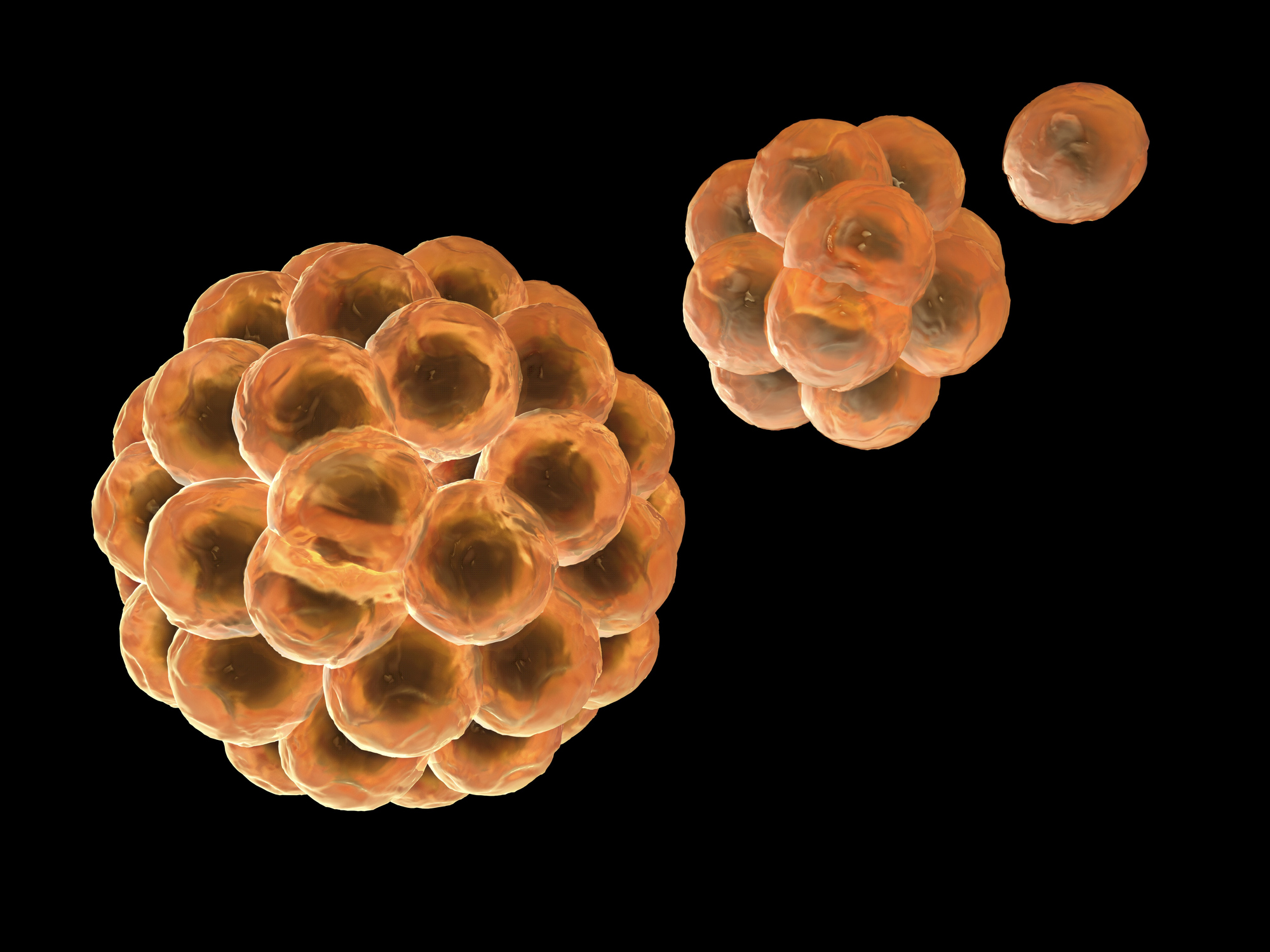Bite Guard
 Above: One of the strongest materials in the world could help protect humans from one of the most annoying — and dangerous — creatures in the world. Top and above images credit: Getty Images.
Above: One of the strongest materials in the world could help protect humans from one of the most annoying — and dangerous — creatures in the world. Top and above images credit: Getty Images.What is it? In a famous example, a mere atom-thick sheet of graphene — one of the strongest materials in the world — could hold the weight of an elephant without breaking. But say you don’t have an elephant, and you’re looking for a more practical use for your graphene. How about bug protection? Buddy, you’re in luck: A new study from Brown University suggests that graphene could offer a chemical-free approach to mosquito bite prevention.
Why does it matter? “Mosquitoes are important vectors for disease all over the world, and there’s a lot of interest in non-chemical mosquito bite protection,” said engineering professor Robert Hurt, senior author of a new paper published in PNAS. In fact, climate change is putting even more people at risk of mosquito-borne diseases, like malaria, chikungunya, and Zika — so the need for advanced bite-protection technology is dire.
How does it work? The researchers tested a material called GO, or graphene oxide, which they draped over the skin of experiment subjects; they think the material could be used as a lining in mosquito-proof clothes. It worked how they’d expected — namely that it physically prevented mosquitoes from biting. But they were surprised to find that the material worked in a way they hadn’t expected, too: The film also seemed to block the chemical signals that mosquitoes sense to let them know a blood meal is near. Brown Ph.D. candidate Cintia Castillho, lead author of the study, said, “We had assumed that graphene would be a physical barrier to biting, through puncture resistance, but when we saw these experiments we started to think that it was also a chemical barrier that prevents mosquitoes from sensing that someone is there.”
Organ Of Progress
 Synthetic antibodies could be used to activate stem cells to help in tissue regeneration. Image credit: Getty Images.
Synthetic antibodies could be used to activate stem cells to help in tissue regeneration. Image credit: Getty Images.What is it? Synthetic antibodies — engineered versions of the molecules our bodies produce naturally to fight infection — could “hold the key to stimulating the body’s ability to regenerate,” according to researchers at the University of Toronto.
Why does it matter? As a release from the university explains, antibodies are a hot ticket in various drug treatments due to their abilities to bind to and affect the behavior of proteins in cells. The Canadian researchers zeroed in on their ability to instruct stem cells, which are involved in tissue repair. The synthetic antibodies they created “already show promising results in activating gut stem cells and can potentially be used to treat irritable bowel disease (IBD) by regenerating the damaged intestinal lining,” said Sekar Seshagiri, CEO of the Toronto startup AntlerA Therapeutics, whose co-founders published a paper on the new findings in eLife. They might also be used to treat degenerative diseases of the eyes, lungs, liver and bones, Seshagiri said.
How does it work? The scientists engineered their antibodies to resemble proteins called Wnt, which typically instruct stem cells to form tissue in human embryos, as well as to perform work like tissue repair in adults following injury. Wnt proteins have long been of interest to scientists interested in tissue regeneration, but they’re too complicated to isolate. The scientists found that their synthetic antibodies, acting like Wnt proteins in cell culture, were similarly able to spur the growth of tissue — even “stimulate the formation of stem cell-derived intestinal organoids, three-dimensional balls of tissue that resemble the small intestine.”
Squeezing More Juice From Solar Panels
 No new hardware required: Researchers at the University of Waterloo wrote a software algorithm to help solar arrays perform more efficiently. Image credit: Getty Images.
No new hardware required: Researchers at the University of Waterloo wrote a software algorithm to help solar arrays perform more efficiently. Image credit: Getty Images.What is it? Elsewhere in Ontario, researchers at the University of Waterloo figured out a way to increase the efficiency of solar photovoltaic systems — and because it’s an algorithm, no new hardware is required.
Why does it matter? The algorithm should help small-scale solar arrays, like home panels, work a little smarter, but researchers say that the big savings will accrue to the big users, like solar farms. Ph.D. candidate Milad Farsi said, “Taking Canada’s largest PV plant, for example, the Sarnia Photovoltaic Power Plant, if this technique is used, the savings could amount to 960,000 kWh/year, which is enough to power hundreds of households. If the saved energy were to be generated by a coal-fired plant, it would require emission of 312 tons of CO2 into the atmosphere.”
How does it work? As a Waterloo release explains, “The new algorithm enables controllers to better deal with fluctuations around the maximum power point of a solar PV system, which have historically led to the wasting of potential energy collected by panels.” The findings are explained further in IEEE Transactions on Control Systems Technology.
When Your Job Coach Is A Bot
 Humans might work better with a little constructive feedback from artificial intelligence. Image credit: Getty Images.
Humans might work better with a little constructive feedback from artificial intelligence. Image credit: Getty Images.What is it? According to the usual arrangement, humans try to teach artificial intelligence to be more lifelike — as we’ve discussed here recently. But at the Humana Pharmacy call center, a software called Cogito is reversing the equation: There, among other workplaces, AI is “training human workers to be more compassionate,” according to USA Today.
Why does it matter? According to its co-founder and CEO, Joshua Feast, Cogito can help humans whose job it is to engage with customers all day — Humana agents handle 30 to 40 calls per diem — but who may get tired and suffer from “compassion fatigue.” “What the AI is really doing is helping somebody be more consistent in the course of the day,” Feast said.
How does it work? The software monitors the speech of call center employees and gives feedback on things like “pitch, tone and rhythm of voices.” One such alert could read, “You are speaking faster than usual.” Or, “Think about how the customer is feeling. Try to relate.” The USA Today article notes that the software is not compulsory at Humana, but the company is considering “integrating Cogito's assessment into its bonus mechanism to promote the software's usage.”
Near-Infrared Light In The Dark
[embed]https://www.youtube.com/watch?v=ycsk2JaLhhI[/embed]
What is it? Not to alarm you, but there have been a bunch of mice running around with night-vision capabilities — just like Spider-Man. Those abilities were conferred by researchers from the University of Massachusetts Medical School, who, in truth, kept those mice locked safely away in the lab. They’re just the latest subjects in a project to give humans night vision by enabling us to see near-infrared (NIR) light.
Why does it matter? The team successfully tested the technology on mice. But it could also be used to treat eye diseases or help people perform astronomy without special gear. There’s another, obvious reason why this matters: Night vision would be extremely cool.
How does it work? Humans and other mammals detect light between wavelengths of 400 and 700 nanometers. NIR light has longer wavelengths that can be detected by devices like thermal imaging cameras, but they’re bulky and expensive. The Massachusetts researchers injected the eyes of mice with nanoparticles made from the rare-earth materials erbium and ytterbium, which helped “convert low-energy photons from NIR light into higher-energy green light that mammalian eyes can see,” according to a release from the ACS. The injection lasted for about 10 weeks and didn’t seem to have any side effects.




